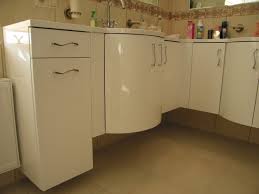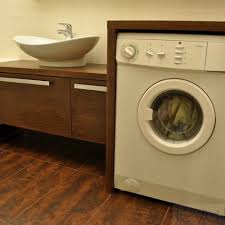Product successfully added to your shopping cart
There are 0 items in your cart. There is 1 item in your cart.
Categories
Top sellers
-

Round bathroom mirror Rondo LD
Product code: 901-L-Dxxx Diameter: according to the customer's need...
53,00 € -

Bathroom cabinet with washbasin Gloria 2D87
Product code: GL2-SU2S86-1-F83 Width: 87 cm (composite washbasin with...
759,00 € -

Bathroom cabinet with washbasin Viena D110
Product code: VE2S-D110-F01 Width: 110 cm Color: White gloss F01,...
874,00 € -

Round bathroom mirror with LED lighting Solei LD
Product code: 903-L-Dxxx LED Diameter: according to the customer's...
199,00 € -

Bathroom mirror Lumina LX with LED lighting
Product code: 900-L-00001 Dimensions and shape: according to customer's...
240,00 €
Choosing bathroom furniture
The main rules
There is no single correct formula for the right selection of bathroom furniture, just as there is no other absolute rule or law. However, there are certain objectives that should not be ignored when choosing bathroom furniture.
Aesthetic aspirations
Without ignoring existing aesthetic requirements dictated by the era or social environment, aesthetics is a collection of maximally subjective needs. However, it must be recognized that the aesthetic conformity of environmental objects to the owner's needs is one of the most important aspirations of a modern self-sufficient society. Increasingly, the engine of interior change is no longer physical, but moral wear and tear of the environment. Therefore, it is very important to choose bathroom furniture not to yesterday's trends, but to today's or even tomorrow's aesthetic touches. Statistics show that the decisive factor in choosing bathroom furniture is the washbasin. It is according to the desired type and shape of the washbasin that most people choose a specific BATHROOM CABINET WITH A WASHBASIN.
Arrangement of bathroom furniture
It is very unfortunate to see the irreversibly and very expensively damaged bathroom interior, when the entire wall of the bathroom, decorated with the best tiles, is cluttered like an altar by a complicated and boring row of single-volume cabinets. The most common argument of the owner of such an interior is: "I have nowhere to store my things." Indeed, the real inspirer of the production of such altars is the owner's vice: "I don't know how not to accumulate unnecessary things" (we look at the picture below).





Bathroom - the humid environment and the furniture should be placed spaciously and well ventilated from all sides. All furniture surfaces must be accessible for cleaning. It is simply not allowed to place the bathroom furniture close to each other - such crowded surfaces will not ventilate, will accumulate moisture and dirt, and will soon cause mold or fungus. Molds and fungi love moist, warm rooms and feed on the dirt we leave behind. The dirt decomposed by the fungus releases various gases, thus creating a difficult to detect and uncontrollable source of unpleasant odors in our premises. All the spaces left between the furniture can be enlivened with various bathroom accessories: towel holders, hangers and other pleasant accessories. More often, the interior customer turns to the designer with a request to design bathroom furniture for a specific 217 or 178 centimeter wide free wall. I have no doubt - if we did not influence the designer's desire to have furniture there "from edge to edge" - the interior would acquire aesthetic and functional meaning. The most common one is that a pressed designer designs an ordinary faceless viola "from edge to edge". Even more strange is the almost religious need to hide the washing machine in the same altar under the entire worktop in the modern bathroom interior. The solution is difficult to understand both from a rational and aesthetic point of view: washing machine manufacturers professionally solve the design of the washing machine and it will look great alone placed in the corner of the bathroom, and not incorporated in an eerie altar, where you will suffer from lack of ventilation, limited maintenance, mold and neglect. Summarizing the above: when deciding on the furniture for the bathroom, you should try to place several separate pieces of freely arranged bathroom furniture, instead of one large and very closed altar (see the picture below).








You can see more aesthetically appealing and well-made bathroom furniture collections HERE.
Bathroom furniture materials and technologies
The most common structural material for bathroom furniture is MDF (medium density fiberboard) or MFPB (melamine faced particle board) panels. These panels are made of chopped wood particles bound together with a polymer binder. This structure of the board makes it hygroscopic - the wood particles are absorbing the the environmental moisture and are swelling. After drying, it shrinks again. A few such unfortunate cycles may leave no residual consequences. However, systematically repeated cycles break down the binding effect of the polymer binder and ... the panel falls apart. And this is a big disaster for the furniture. In order to avoid such consequences, the bathroom furniture is protected from the penetration of moisture into the panels by lacquering them. Lacquering is the most reliable modern means of protecting furniture panels from moisture. Modern lacquers are very resistant to moisture. In addition, in modern lacquering lines, the facade details are coated together with the side edges, thus providing the detail with special moisture protection. Lacquering is a relatively expensive technology, so lacquered bathroom furniture is more expensive than MFPB. The surface of laminated MFPB has a rather limited resistance to external moisture, and the cut edge of such a panel, covered with furniture edge tape, is the least protected against the effects of moisture. The requirements for natural wood bathroom furniture are slightly different - wood expands under the influence of moisture, and when it dries, it returns to its original dimensions. Because wood does not contain polymer binders that can break down, this natural wood bathroom furniture will withstand endless cycles of moisture. Usually, natural wood bathroom furniture is varnished to prevent foreign liquids from being absorbed into the wood, which can change the color of the wood. In summary: lacquered bathroom furniture is the most appropriate and most suitable for a modern bathroom.
Properly selected and carefully operated bathroom furniture can not only serve you, but also make you happy.








